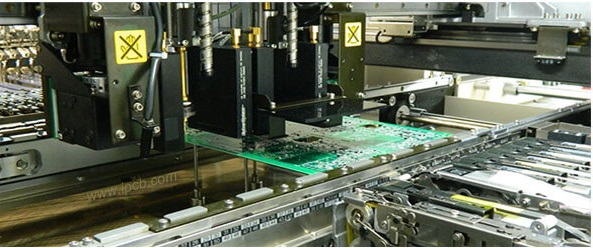SMT machining refers to surface mount technology machining, which is currently the most commonly used circuit board assembly technology in electronic manufacturing. Compared with traditional SMT technology, SMT machining has higher accuracy and efficiency and can adapt to more complex circuit board designs, thus it has been widely applied.

SMT Machining
The process flow of SMT machining includes PCB making, steel mesh production, component mounting, welding, and testing. Among them, the production of steel mesh is one of the key links, which are used to control the adhesion position of components. In the SMT machining process, the steel mesh needs to be fixed on the printing machine first, then the PCB board is placed on the printing machine, and the solder paste is printed on the PCB board through the printing machine. Next, place the components on the printing machine, locate them through the machine vision system, and stick them to the designated position. Finally, through reflow soldering or wave soldering and other methods, components and PCB boards are
welded together to complete the SMT machining.
Compared to traditional SMT machining, SMT machining has the following advantages:
1. High density: SMT machining can achieve higher circuit density on PCB boards, as components can be arranged more closely together.
2. High precision: The precision of SMT machining can reach the micrometer level, which can adapt to more complex circuit board designs.
3. High speed: The speed of SMT machining can reach tens of thousands of components per hour, greatly improving production efficiency.
4. Space saving: SMT machining can attach components to the surface of PCB boards, saving space and making circuit boards lighter and thinner.
In addition to the above advantages, SMT machining can also improve the reliability and stability of circuit boards. Because during the welding process, the solder joints between the components and the PCB board are more secure and less prone to loosening and fracture. In short, SMT machining is currently the most commonly used circuit board assembly technology in electronic manufacturing, with advantages such as high density, high precision, high speed, and space-saving. SMT machining can improve the reliability and stability of circuit boards, playing an important role in electronic manufacturing.
What preparations need to be made before SMT machining?
SMT machining is an abbreviation for the process of soldering components on PCB circuit boards through a mounting machine and a reflow soldering machine. Whether the components can work properly and whether the final circuit board can ensure normal operation and functionality depends on this. Therefore, process control measurements must be implemented before SMT machining to optimize PCBA processing and assembly. This will ensure that costly errors are not detected in the future, reduce product failure rates, and protect the reputation of SMT chip machining plants.
What PCB should be tested for
1. Whether the PCB light board is deformed and whether the surface is smooth
2. Is there oxidation on the circuit board pad
3. Is the copper coating on the circuit board exposed
4. Has the PCB been baked for the specified time
What should be checked before printing solder paste
1. Plates cannot be stacked vertically, and collisions between plates are not allowed
2. Is the positioning hole consistent with the template opening
3. Does the solder paste thaw in advance at room temperature
4. Is the selection of solder paste correct and expired
5. Is there calibration data for the SPI solder paste detector
6. Whether the steel mesh and mold are cleaned and whether there is flux residue on the surface
7. Is the warping test conducted on the steel wire mesh
8. Are the scraper parameters calibrated and adjusted
The process of SMT Machining
SMT chip mounting machining is the process of attaching components to a PCB based on the PCB circuit board.
1. Solder paste printing: This process is usually in the front section of the SMT machining production line, and its main function is to leak solder paste or SMD adhesive onto the PCB pad through the steel mesh, preparing for the welding of components.
2. Glue dispensing: The main content of the dispensing operation is to drop glue onto the fixed position of the PCB, and its main function is to fix the components onto the PCB board.
3. Placement: The role of the placement process in SMT placement machining is to accurately install the surface group SMT automated assembly components onto the fixed position of
the PCB. The equipment used is a mounting machine, which is generally distinguished based on mounting speed and accuracy.
4. Curing: The main function is to melt the patch adhesive so that the surface assembled components and PCB board are firmly bonded together.
5. Reflow soldering: the main function of reflow soldering is to melt the solder paste so that the surface-mounted components and PCB board are firmly bonded together. In SMT chip machining, the reflow soldering process is directly related to the welding quality of the circuit board. The temperature curve of reflow soldering soldering is also one of the important parameters of SMT machining.
SMT machining technology, as the main assembly technology for PCB circuit boards, has been widely applied in various fields and electronic products. Compared with traditional plug-in assembly technology, SMT chip processing has advantages such as small size, fast transmission, good performance, high efficiency, and low cost, which just meets the future development needs of electronic products. Therefore, SMT machining plays an important role in promoting the development of the electronics industry, and the height of SMT chip processing technology also determines the dimensions of the future development of the electronics industry.